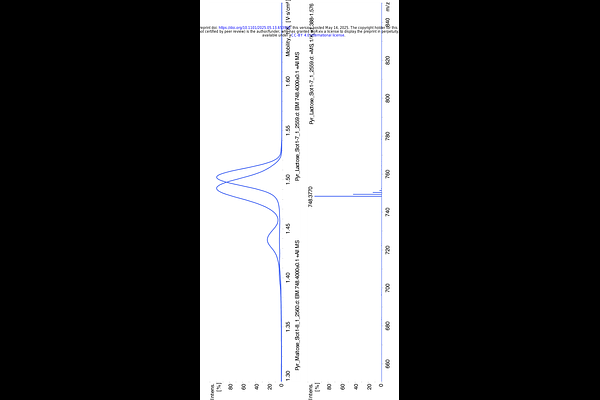Mass Spectrometric Profiling of Microbial Polysaccharides Using Laser Desorption/Ionization - Time-of-Flight (LDI-TOF) and Liquid Chromatography/Mass Spectrometry (LC/MS): A Novel Method for Structural Fingerprinting and Derivatization

Mass Spectrometric Profiling of Microbial Polysaccharides Using Laser Desorption/Ionization - Time-of-Flight (LDI-TOF) and Liquid Chromatography/Mass Spectrometry (LC/MS): A Novel Method for Structural Fingerprinting and Derivatization
Dadovska, L.; Paskova, V.; Novak, P.; Hrabak, J.
AbstractOver the last two decades, matrix-assisted laser desorption/ionization time-of-flight mass spectrometry (MALDI-TOF MS) has been introduced into the routine diagnostic practice of microbiological laboratories for the rapid taxonomic identification of bacteria and yeasts. However, a method that effectively identifies microbes directly from clinical samples using MALDI-TOF MS has not yet been found. One of the promising targets is microbial polysaccharides, which are abundant structures in bacterial and fungal cells. Their rapid and inexpensive analysis, however, is complicated. This study focused on detecting microbial polysaccharides, such as lipopolysaccharides, using MALDI-TOF MS and liquid chromatography-tandem mass spectrometry (LC-MS). We developed a method for fingerprinting polysaccharides by acid hydrolysis and enzymatic digestion. The mono- and oligosaccharides are then derivatized with a newly developed probe (vanillyl pararosaniline, HD ligand), enabling efficient ionization without the use of the MALDI matrix. The esterification of hydroxyl groups by formic acid was also optimized for precise analysis of the saccharides. The method was validated using several saccharides as well as Escherichia coli lipopolysaccharides (O26:B6, O55:B5, and O111:B4). Derivatization using HD ligand also allows the detection of structures containing amines and phosphate groups in positive ion mode. We also optimize the method using crude bacteria (Escherichia coli, Salmonella enterica, Shigella dysenteriae, Shigella boydii, Shigella flexneri, and Legionella pneumophila). This approach opens the possibility of directly detecting microbial polysaccharides from clinical specimens. LDI-TOF MS (without a matrix) also allows specific detection of molecules of interest with suppression of the background signal.